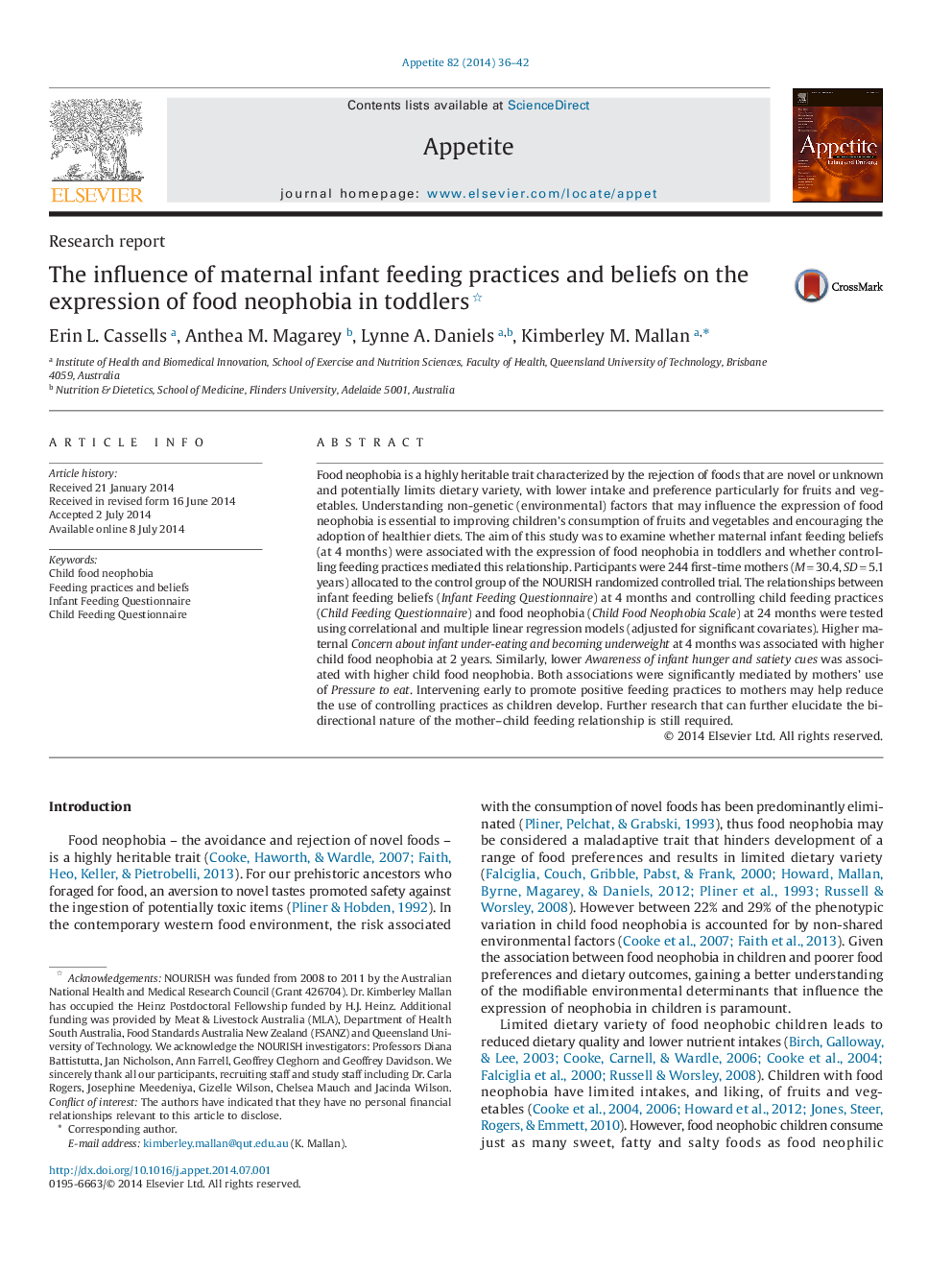| Article ID | Journal | Published Year | Pages | File Type |
|---|---|---|---|---|
| 939461 | Appetite | 2014 | 7 Pages |
•Lower awareness of infant cues was associated with food neophobia at age 2 years.•Concern about infant under-eating was also associated with neophobia at 2 years.•Pressure to eat mediated the relationships between these beliefs and neophobia.
Food neophobia is a highly heritable trait characterized by the rejection of foods that are novel or unknown and potentially limits dietary variety, with lower intake and preference particularly for fruits and vegetables. Understanding non-genetic (environmental) factors that may influence the expression of food neophobia is essential to improving children's consumption of fruits and vegetables and encouraging the adoption of healthier diets. The aim of this study was to examine whether maternal infant feeding beliefs (at 4 months) were associated with the expression of food neophobia in toddlers and whether controlling feeding practices mediated this relationship. Participants were 244 first-time mothers (M = 30.4, SD = 5.1 years) allocated to the control group of the NOURISH randomized controlled trial. The relationships between infant feeding beliefs (Infant Feeding Questionnaire) at 4 months and controlling child feeding practices (Child Feeding Questionnaire) and food neophobia (Child Food Neophobia Scale) at 24 months were tested using correlational and multiple linear regression models (adjusted for significant covariates). Higher maternal Concern about infant under-eating and becoming underweight at 4 months was associated with higher child food neophobia at 2 years. Similarly, lower Awareness of infant hunger and satiety cues was associated with higher child food neophobia. Both associations were significantly mediated by mothers' use of Pressure to eat. Intervening early to promote positive feeding practices to mothers may help reduce the use of controlling practices as children develop. Further research that can further elucidate the bi-directional nature of the mother–child feeding relationship is still required.
